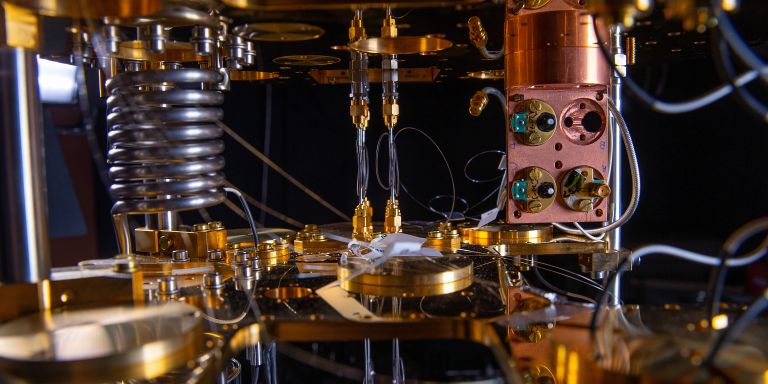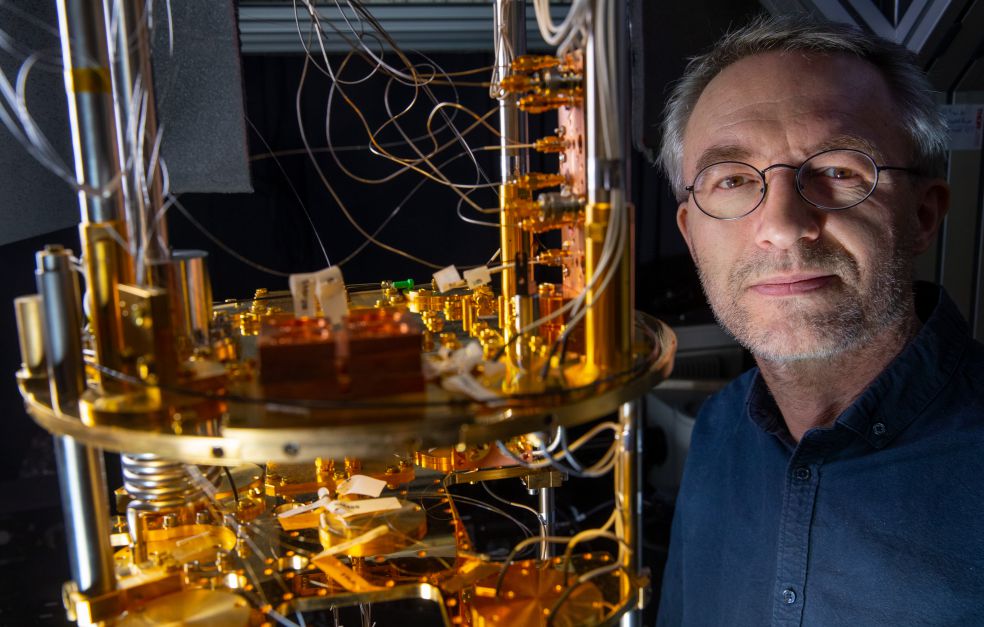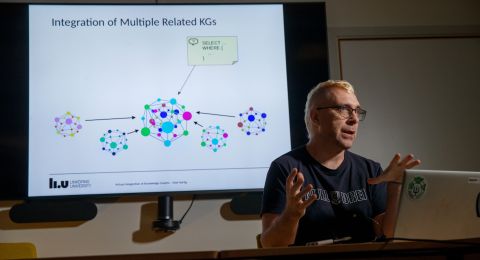
Project Grant 2017
Quantum sensors
Principal investigator:
Professor Val Zwiller
Co-investigators:
Gunnar Björk
Katia Gallo
Jack Lidmar
Mats Walin
Jerker Widengren
Institution:
KTH Royal Institute of Technology
Grant in SEK:
SEK 34,800,000 over five years
Last year Zwiller welcomed Carl XVI Gustaf of Sweden to KTH Royal Institute of Technology for a demonstration of how the internet of the future may consist of individual particles of light. Twenty years had passed since a Russian research team showed that it was possible to use a quantum sensor to capture individual photons.
“The principle had already been established, but it was not until 2001 that someone was crazy enough to try to build a sensor in real life,” says Zwiller, who is a professor of applied physics.”
Zwiller has taken the research further, and he now has several examples of the very heart of the sensor in his desk draw. They are the fruit of the “Quantum Sensors” research project, which has been funded by Knut and Alice Wallenberg Foundation.
“Without the Foundation’s support, I wouldn’t have been able to do this in Sweden – I would have had to look elsewhere. Competition is cutthroat, with huge investments being made in the U.S., China and elsewhere,” he says.
Capturing individual photons
At the heart of the quantum sensor lays a tiny network of superconducting wires, in which a particle of light fastens like a fly on a spider’s web. The trapped particle causes the superconductor to generate an electrical pulse from the sensor.
The electrical pulse is measured and analyzed to determine the polarization of the particle, i.e. its quantum state. The researchers use the polarization to simulate the ones and zeros that our computers use to communicate.
Current technology requires millions of photons to represent a single one or zero in a fiber optic network, whereas the quantum sensor makes it possible to send the same information using a single photon.
The advantages are many; much lower energy consumption is a particular plus. But the technology has excited most interest because it is so secure.
“Current security systems are based on equations created by people. And they can all be cracked. But it’s impossible to hack into quantum communication without being noticed,” Zwiller explains.
The reason is to be found in the seven-letter word “quantum”. Very simply put, the laws of physics render it impossible to measure the quantum state of a particle without that state being altered. Any alteration would immediately be detected.
Unusual world-leading laboratory
Zwiller arrived at KTH as recently as 2015. He and two PhD students took turns behind the wheel of a van on a 24-hour road trip all the way to Stockholm from Delft University of Technology in the Netherlands.
“We simply couldn’t be sure that anyone else would take proper care of the unique equipment we had with us.”
The optical instruments in the van were the first step in creating the high-tech laboratory in which the quantum sensors have been developed. The lab has no windows, since daylight interferes with the measurements. But to brighten up the workplace, the walls have been painted bright orange, and loud music booms out from loudspeakers fitted to the ceiling. The music is chosen by the many students, postgraduates and postdocs who have been enticed to Sweden from the whole of Europe by the unique research environment.
They include researcher Marijn Versteegh, who has been with the team since 2015. He, too, is from the Netherlands. He is a little nervous as they prepare to perform the day’s task: adjusting one of the optical fibers in the sensor. The cryostat, which cools the quantum sensor to approximately minus 270 degrees Celsius, has been switched off – a very rare event.
“Adjusting the fiber is a tricky business, since there’s a risk of it getting too close and damaging the sensor. We’re working on a scale of micrometers, and we make all the adjustments by hand,” Versteegh says.
He will not know whether he has succeeded until two days later. By then the sensors will once again have been cooled down to the right temperature for testing.
The internet of tomorrow
Alongside him in the lab are two students working with the equipment that King Carl XVI Gustaf came to see. The lab is linked by optical fiber to the telecoms giant Ericsson in Kista, north of Stockholm. Together they are establishing a knowledge base on how these sensors can become components in the internet of tomorrow. But the technology has many more potential applications, as Zwiller explains:
“Come back in five years – by then we’ll have built an instrument on the roof that can monitor air quality in real time over the whole of Stockholm. It will be a new kind of light radar – lidar – that shows how light is absorbed by various gases in the air. It will be much quicker than current monitoring, which is done at street level.”
The ability of the quantum sensor to measure extremely small quantities of light makes is suitable for clinical use. The research team is collaborating with Karolinska Institutet to develop methods of detecting interactions between molecules.
Looking even further into the future, Zwiller would like to use the sensor to emulate neurons in the brain, with a view to copying the brain’s architecture in the form of a quantum brain in which all communication takes place with light.
But first he has to solve the knotty problem of placing as many sensors as possible on a single chip.
“We would really like to have several million working together, but the first step will be to place a thousand sensors in the same instrument. That may take us five years.”
Text Magnus Trogen Pahlén
Translation Maxwell Arding
Photo Magnus Bergström





